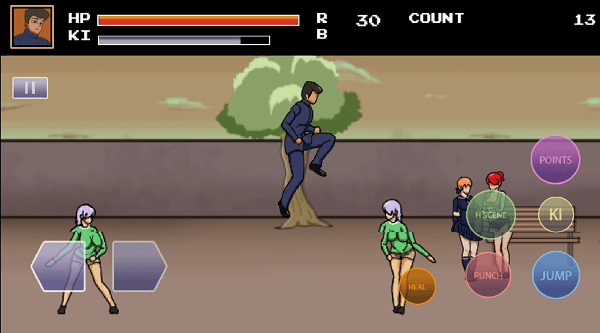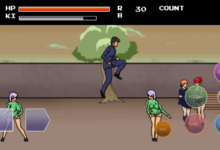College Brawl: Causes, Consequences, and the Path Forward

College brawls are an unfortunate reality in many academic institutions worldwide, often tarnishing the reputation of the colleges involved and creating an unsafe environment for students. These incidents range from minor altercations to full-blown clashes involving large groups of students, and their impact extends beyond the immediate participants. Understanding the causes, consequences, and potential solutions to prevent such occurrences is vital for fostering a healthy and secure educational environment.
Causes of College Brawls
Several factors contribute to the eruption of violence on college campuses:
- Personal Disputes
Conflicts among students over personal matters such as relationships, friendships, or perceived insults often escalate into physical confrontations. - Cultural and Regional Differences
Many colleges bring together students from diverse backgrounds, and misunderstandings or prejudices can lead to clashes. - Ragging and Bullying
Senior students sometimes exploit their power over juniors through ragging or bullying, leading to resistance and eventual violence. - Political Influence
Student unions or political affiliations within campuses can fuel tension. Rival factions may engage in brawls to assert dominance or settle scores. - Alcohol and Substance Abuse
Consumption of alcohol or drugs can impair judgment and heighten aggression, often serving as a catalyst for fights. - External Influences
Non-students or outsiders may instigate fights, especially in open-campus institutions where access is unrestricted.
Consequences of College Brawls
The aftermath of a college brawl can be far-reaching, impacting not only the students involved but also the institution and its community:
- Physical and Emotional Harm
Injuries, sometimes severe, can result from these altercations. Additionally, the psychological toll on participants and witnesses can be significant, leading to trauma or anxiety. - Legal Repercussions
Participants may face disciplinary actions, suspensions, or even criminal charges, which can affect their future prospects. - Reputation Damage
Colleges known for frequent brawls may lose their reputation as centers of learning, deterring prospective students and faculty. - Academic Disruption
Classes, exams, and other academic activities often come to a standstill during and after such incidents, hindering the educational process.
Preventing College Brawls
Proactive measures can help mitigate the occurrence of brawls on college campuses:
- Promoting Inclusivity and Tolerance
Workshops and events focusing on cultural sensitivity and mutual respect can foster a harmonious campus atmosphere. - Enforcing Anti-Ragging Policies
Strict implementation of anti-ragging laws and immediate action against offenders can deter such behavior. - Enhancing Security Measures
Installing surveillance cameras, increasing the presence of campus security, and regulating entry can prevent outsiders from causing trouble. - Counseling and Mediation Services
Providing access to counselors for conflict resolution and emotional support can address issues before they escalate. - Monitoring Substance Abuse
Conducting awareness programs and maintaining strict rules about alcohol and drug consumption on campus can minimize their impact. - Encouraging Student Leadership
Empowering student leaders to mediate disputes and act as role models can promote a culture of responsibility.
Conclusion
College brawls undermine the essence of education by creating hostility and fear in what should be a nurturing environment. While conflicts are inevitable in diverse communities, how institutions manage and prevent these disputes determines their long-term impact. Through robust policies, inclusive practices, and active engagement from students and faculty, colleges can transform from battlegrounds into thriving hubs of intellectual and social growth.
FAQs About College Brawls
1. What is a college brawl?
A college brawl refers to a physical altercation or fight involving students on a college campus. These incidents may involve a few individuals or large groups and can stem from personal disputes, political disagreements, or other tensions.
2. What are the common causes of college brawls?
Common causes include:
- Personal conflicts.
- Ragging or bullying.
- Cultural or regional differences.
- Political rivalries among student groups.
- Influence of alcohol or drugs.
- Involvement of external parties.
3. How do college brawls impact students?
Brawls can have serious consequences, such as:
- Physical injuries.
- Emotional trauma, including anxiety or fear.
- Disruption of academics.
- Disciplinary actions or legal consequences for participants.
4. What is the role of ragging in college brawls?
Ragging, or hazing, is a significant contributor to college brawls. When junior students resist or retaliate against seniors’ mistreatment, it can lead to violent clashes. Many institutions now enforce strict anti-ragging policies to prevent such incidents.
Also Read: Minecraft Mod APK: An Overview of Features and Risks
5. Are college brawls always caused by students?
No, not always. Sometimes, external parties or non-students instigate or participate in brawls, particularly in colleges with open campuses or minimal security.
6. What legal actions can be taken against students involved in a brawl?
Students involved in brawls may face:
- Suspension or expulsion from the college.
- Fines or penalties imposed by the institution.
- Criminal charges, such as assault or vandalism, if the matter escalates to legal authorities.
7. How can colleges prevent brawls?
Colleges can take several measures, including:
- Enforcing strict discipline policies.
- Promoting inclusivity and cultural awareness.
- Strengthening campus security.
- Offering counseling and conflict-resolution services.
- Monitoring and addressing substance abuse.
8. What should students do if they witness a brawl?
If a student witnesses a brawl, they should:
- Avoid getting involved physically.
- Inform campus authorities or security immediately.
- Stay in a safe location until the situation is under control.
9. How do college brawls affect an institution’s reputation?
Frequent brawls can tarnish a college’s reputation, making it less attractive to prospective students and faculty. It may also result in negative media coverage and a loss of public trust.
10. Are there programs to educate students about preventing brawls?
Yes, many colleges conduct programs such as:
- Anti-ragging and anti-bullying workshops.
- Conflict-resolution and mediation training.
- Cultural sensitivity and inclusivity seminars.
11. What support is available for students affected by brawls?
Students affected by brawls can seek:
- Counseling services for emotional and psychological support.
- Medical assistance for physical injuries.
- Guidance from student welfare offices or legal advisors for related issues.
12. Can social media escalate college brawls?
Yes, social media can amplify tensions by spreading rumors, provoking confrontations, or glorifying brawl-related videos. Colleges should encourage responsible social media use and address misuse promptly.
13. What should parents do if their child is involved in a brawl?
Parents should:
- Communicate with their child to understand the situation.
- Coordinate with college authorities to resolve the issue.
- Encourage their child to seek counseling if needed.
- Support any legal or disciplinary processes that may follow.
14. How do political factions contribute to brawls?
Student political groups sometimes engage in rivalry, leading to violent clashes. These factions may compete for dominance or settle disputes through confrontations, often disrupting campus harmony.
15. Are there success stories of colleges eliminating brawls?
Yes, several colleges have significantly reduced brawls by implementing:
- Comprehensive anti-violence policies.
- Active engagement between students and authorities.
- Awareness campaigns promoting non-violence.
These measures demonstrate that with concerted effort, campuses can foster a safer, more peaceful environment.





